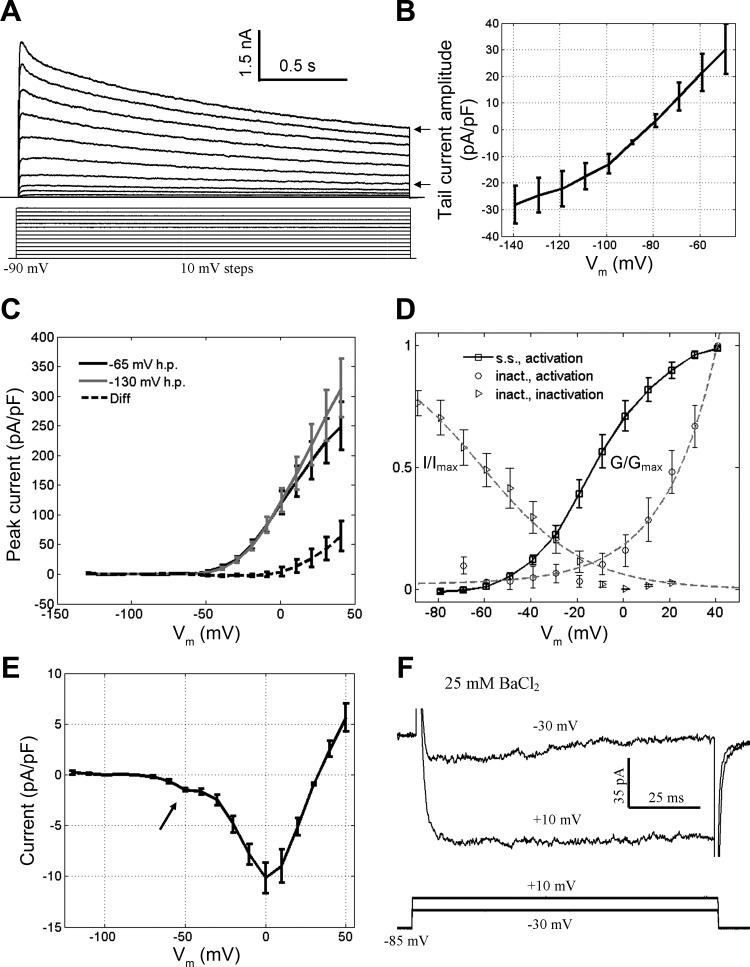Fig. 6.

Properties of K+ and Ca2+ currents in the GG. A: 2-s depolarizing pulses from a holding potential of −90 mV evoked outward currents. Compare the inactivating current at more positive potentials with the steady-state current at less positive potentials (arrows). B: the I-V curve for the K+ tail currents (from a test potential of −20 mV) demonstrates a reversal potential near −80 mV. C: the I-V curves for K+ current activation from 2 different holding potentials (−65 and −135 mV) can be subtracted to isolate the I-V relationship for the inactivating component of IK. D: approximate steady-state curves for the steady-state and inactivating components of IK. Fits were as follows: steady-state activation: V1/2 = −12 mV, slope = 14 mV (Boltzmann); inactivation: V1/2 = −61 mV, slope = −22 mV (Boltzmann); activation of inactivating component: rise = 22 mV (exponential). E: the I-V curve of putative Ca2+ currents shows that a component is activated at resting potential (arrow). F: exposure of GG neurons to extracellular 25 mM BaCl2 revealed that ICa consists of both inactivating (test potential of −30 mV) and persistent components (test potential of +10 mV). Data were collected from a holding potential of −85 mV. h.p., Holding potential; s.s., steady-state component; inact., inactivating component; G/Gmax, normalized conductance; I/Imax, normalized current.
